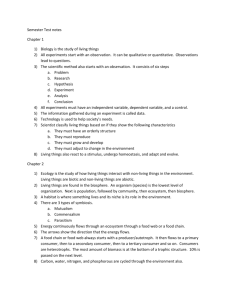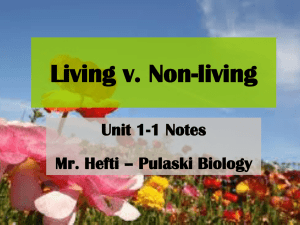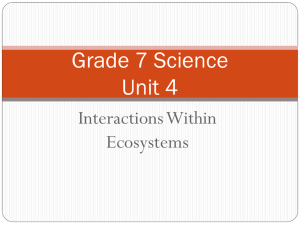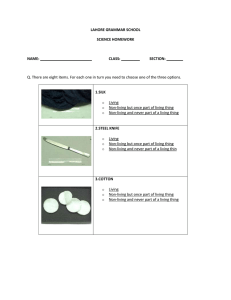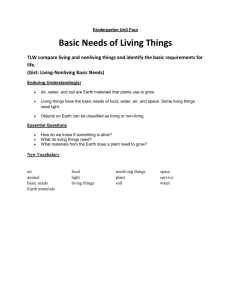Document 5582249
advertisement
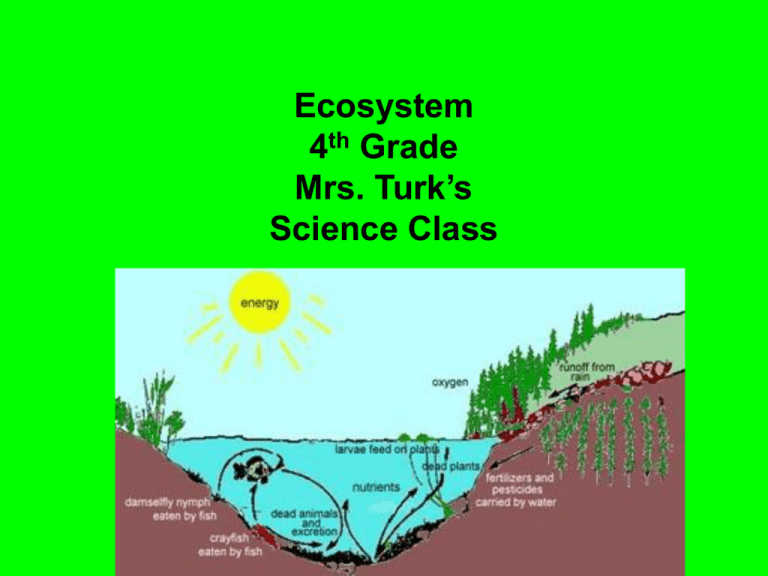
Ecosystem 4th Grade Mrs. Turk’s Science Class Examples of Ecosystems Learner Expectations • Content Standard: 4.24 Identifies how matter and energy do or do not cycle in a ecosystem. Describes how matter cycles in a ecosystem (nutrients, producers, consumers and decomposers) but energy must always be added. • Learning Expectations: • The student will investigate how living things interact with one another and with non-living elements of their environment. • Investigate the relationships among organisms in a specific ecosystem. Vocabulary • • • • • • • Ch.1 system stability ecosystem population community habitat • • • • • decomposer energy pyramid consumer niche food web Vocabulary • • • • producer energy pyramid climate diversity • • • • • climate diversity intertidal zone near-shore zone open-ocean zone Vocabulary Ch. 2 • succession • reclamation • conservation • redesign • preservation In this activity you will: • Learn how living things interact with one another and with nonliving elements of their environment. • Write a paragraph using three facts you learned from this presentation. What is a Population? • A population is one species living in a specific area. • For example, all foxes living in an area form a population. • Another example, all dandelions growing in an area form another population. What is a Community? • A community is formed from all living populations found in an area. • All the foxes, dandelions, grasshoppers, snakes, hawks, deer, and skunks living in one area each form their individual populations, but together make up a community. What is a Ecosystem? • An ecosystem is formed by the interactions between all living and non-living things • How do living and non-living things interact in an environment? What is Ecology? • Ecology is how living and non-living things affect each other in their environment. • We have already named several living things found in a community. Can you name non-living things in your community? Non-living parts of your community • • • • • Buildings Roads Bodies of water Automobiles Traffic lights How non-living and living things affect each other • Building more homes drives many animals out of their natural habitats or communities. • Littering can destroy an animals habitat. • Air pollution from automobiles and factories will affect the quality of life for all living things in a community, including people. Writing Activity • Write a paragraph about the effects that living and non-living things have on each other. Include three facts from this presentation and one fact that you discovered on your own.

